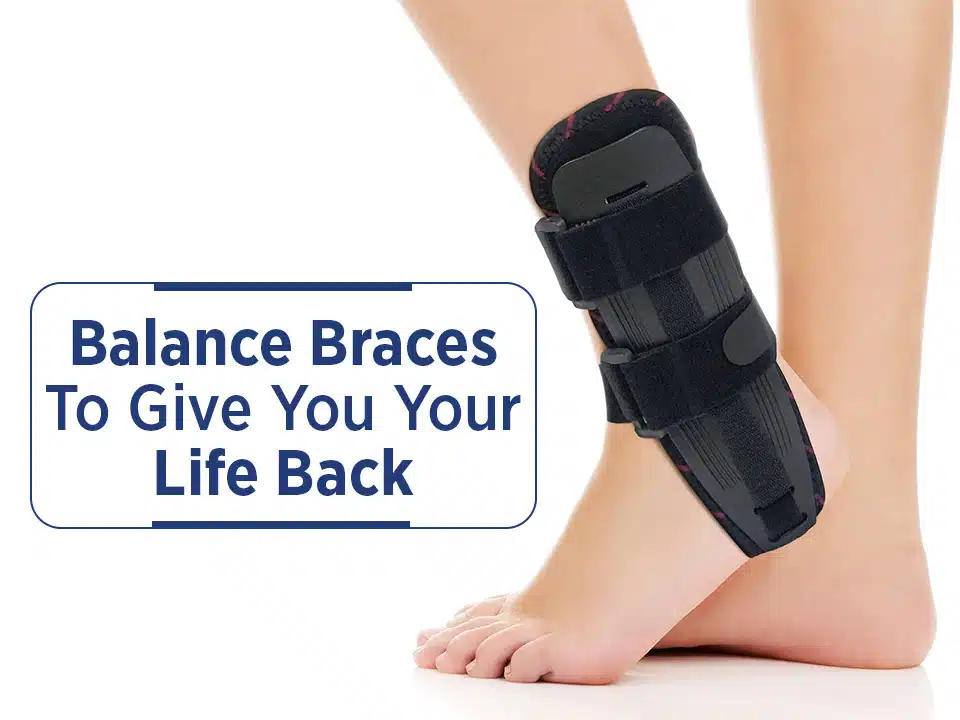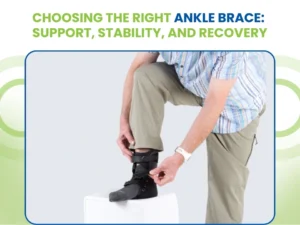Balance braces are a relatively new type of orthotic device that has gained popularity in recent years. These braces work by providing support and stability to the joints, helping patients achieve better balance and control over their movements. With the help of balance braces, many people have been able to get their lives back after suffering from balance problems. They can be worn discreetly under clothing or incorporated into specialized footwear, making them easy to use and comfortable to wear.
Balance braces are a type of medical device used to treat various conditions and injuries that affect our balance and movement. These braces are commonly prescribed for individuals who have suffered from conditions like osteoporosis, multiple sclerosis, or Parkinson’s disease, as well as those who have experienced accidents or injuries that impact their mobility and balance.
Made from lightweight materials like foam, plastic, and metal springs, these braces work by providing extra support to the body in order to help restore proper alignment and movement. Using straps or other mechanisms to attach the brace directly to the body, they provide targeted compression and support in areas where it is needed most.
Unlike traditional braces, which are typically used to help treat specific injuries or conditions, balance braces focus on improving overall balance, improve overall stability, and coordination. They can be used by people of all ages and fitness levels, helping anyone who struggles with instability or poor coordination regain their confidence and enjoy life to the fullest.
Who Can Benefit From A Balance Brace?
At some point in your life, you will fall. That’s a pretty simple fact. We’re all human, and accidents happen. This is generally not that big of a deal if you’re a younger person. Of course, it’s not fun, but most falls or trips aren’t catastrophic when you’re young.
However, a simple accident for a senior might have drastic consequences. What might have just resulted in a nasty bruise when you were 30 or 40 could easily be a broken hip when you’re 70. You also will not be able to recover as quickly as you could have when you were 40, either.
People fall all the time, but sometimes, there’s a medical cause behind falls, especially if they occur frequently. It could be a whole host of reasons: neurological reasons, arthritis, worsening balance, etc. Even if you’re relatively healthy, age can still have big ramifications for your balance. Some of the statistics on seniors and falls are staggering.
- About a third of adults 65+, and half of those 80+, will fall at least once in a given year. Two-thirds of them will fall again within the next six months.
- About 20% of those falls will cause a serious injury—such as a broken hip or traumatic brain injury.
- Approximately 10,000 fatalities per year are directly or indirectly related to falling in just the United States.
Essentially, if you’re over 65, you have a pretty good risk of falling within a given year. If you’re over 80, that risk is even higher. The consequences of these falls increase exponentially the older you get as well.
Weakened muscles and bones are a bad combination and could easily result in a broken bone, which will affect your ability to stay active and healthy. Pair this with balance problems, and you have a bad situation brewing.
There are also psychological consequences to falls, even if the fall is not serious. A fall may startle you enough to prevent you from taking risks and may keep you from exercising, which will once again affect your overall health. Clearly, the risk of tripping or taking tumbles poses a big risk for Americans over 65 in a host of ways outside of the simple damage of a fall.
Read More: 7 Healthy Foods For Seniors At Thanksgiving
Who Is At Risk?
This is a little bit of a loaded question, as we’ve already stated just how prevalent falls are among older Americans. We could very well tell you anyone, over 65 lives with some degree of risk, which is true. (Even if you aren’t 65 or older, you still are at risk, albeit not nearly as much as an older person or someone with a certain medical condition. Life happens- we get it.)
Going off of this, we keep an eye out for the following clinical considerations when assessing the risk of a serious fall.
- Any previous history of falling. This is one of the more telling indicators of a high probability of falling.
- Chronic ankle instability
- Ankle arthritis
- Peripheral neuropathy
- Neurological conditions (foot drop, stroke, etc.)
- Vestibular disorder
- Vision or hearing impairment
- Any general difficulty with balance.
It’s also worth noting that our patients can often tell if they’re at risk for a serious fall. If you feel instability in your gait or have caught yourself falling before, you can probably guess that you’re at risk moving forward.
Many people are often aware of their health concerns and can admit to us that they’re slowly noticing that they have gait, ankle, or neurological issues. Our team here can then format a game plan moving forward.
This is usually a good place to be, as your history primes us to best counteract potential issues with your health moving forward. As unfortunate as it is that you’re seeing us about these issues, it’s all together for the best. We’ve seen histories of past conditions or falling slowly evolve into something more insidious: a serious injury as a result of a fall. Luckily, these clinical considerations help us evaluate your risk by looking at the past to inform the present and future.
The Benefits Of Balance Braces
However, it is also worth noting that you don’t necessarily have to have a history of falls to be at risk. Yes, it’s telling if you have fallen in the past, but we also can notice slight issues in your gait or considerations for your condition to help us decide if you’re at risk.
What may be benign and unnoticeable to you may be a red flag to our experienced eyes. After all, we have a lot more experience spotting the risk factors of a fall. Things can change suddenly, even if you’re at low risk of a fall. After all, it only takes one serious fall to change your lifestyle seriously.
So what’s the best course of action to counter this? Balance braces!
You might be skeptical about this, but trust us- balance braces seriously stabilize your ankles and provide additional support to prevent bad falls. We’ve seen the right pair help our patients become much more confident in their movement; many are able to use these braces to return to the activities and hobbies they love without fear of an unexpected fall.
That sounds like a pretty good deal. But what are the considerations a possible braces patient should think about?
To begin, having the right brace is a good starting point. For instance, we could tell you about the benefits of running shoes, but that advice won’t make a difference if you end up with the wrong pair of shoes. The same applies to braces; quality matters. Sometimes it only takes one fall—although 80 percent of falls do not result in a serious injury, you really don’t want to play the odds. Being proactive and obtaining a balance brace from a qualified foot and ankle specialist like us can help keep you steady and safe before your first fall.
Read More: Benefits of Orthopedic Braces for Arthritis
Bottom Line
Whether you’re an athlete looking to improve your performance or simply someone struggling with day-to-day tasks like walking or getting dressed without falling over, balance braces can make a huge difference in your quality of life. These devices have been shown to be safe and effective, with many users reporting improved stability and a better quality of life overall. So why wait?
If you’re struggling with balance issues and are looking for a way to regain your stability and confidence, talk to your doctor about whether a balance brace might be right for you. With the right support and adjustment, it could be just what you need to get your life back on track!
Artik Medical Supply provides high-quality, long-lasting products. We focus on our client’s needs to find the right solution that aligns with their primary care doctors’ guidance for their rehabilitation process. Are you in need of pain relief or recovering from an injury or surgery? Connect with us today to check eligibility and see how we can help.







